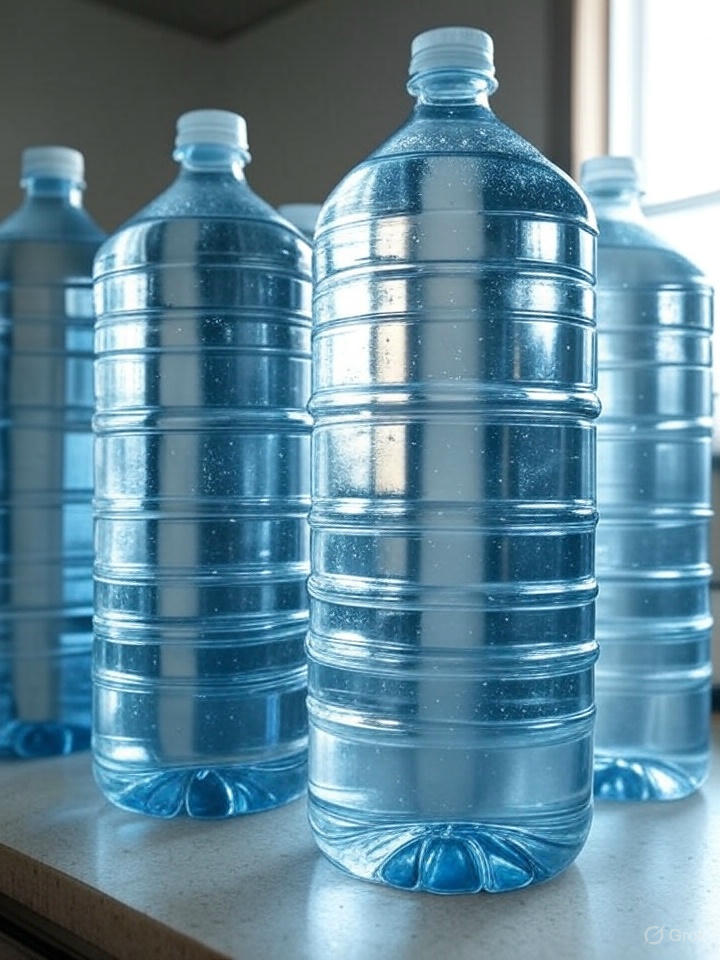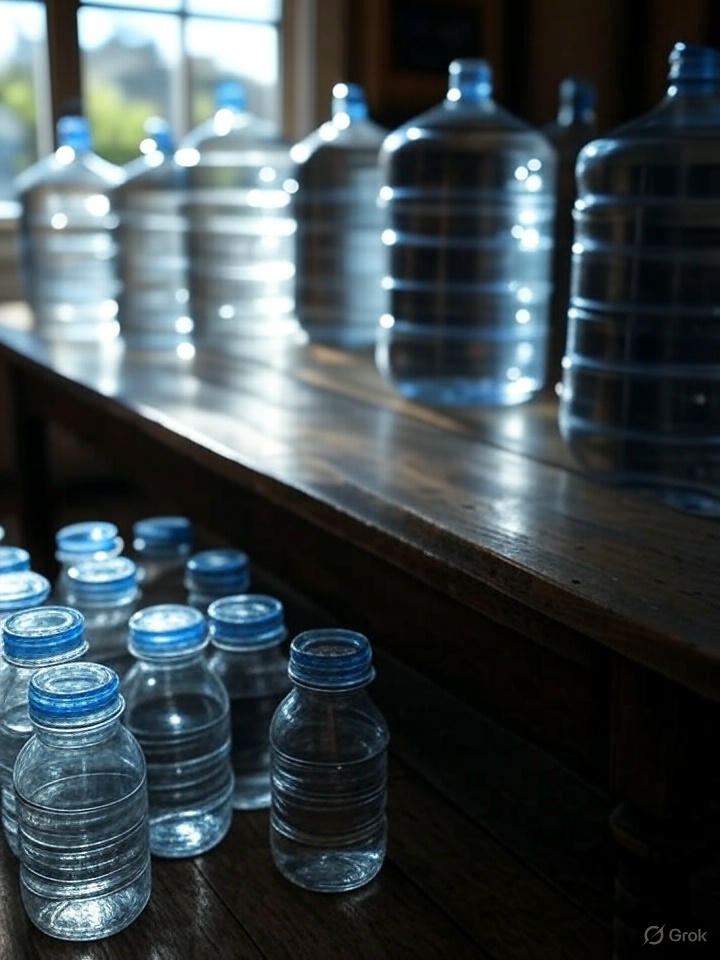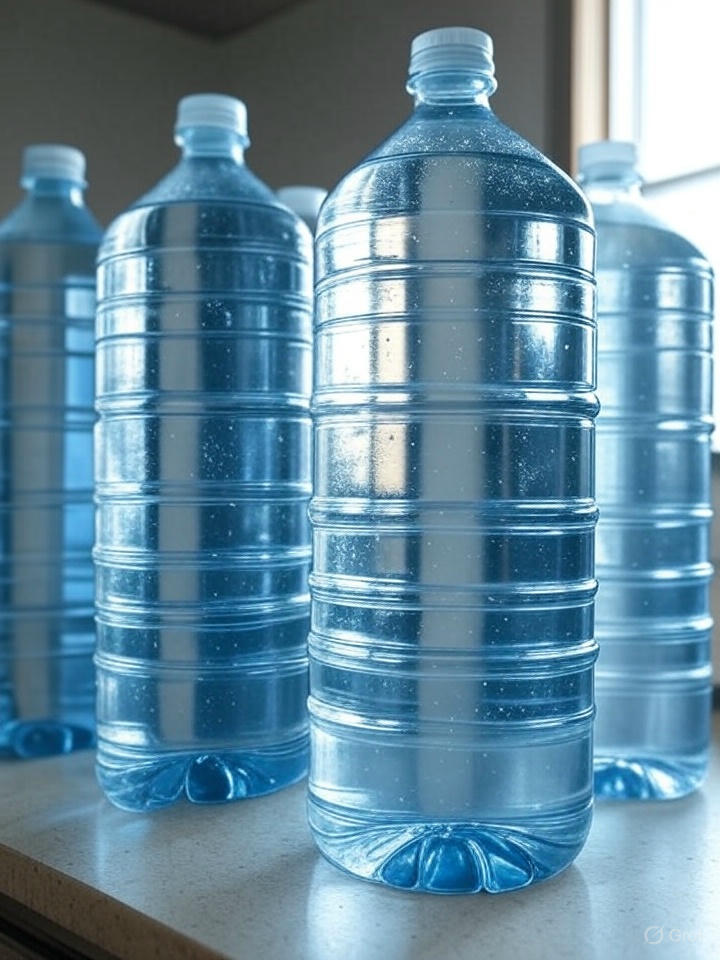The worldwide drive for sustainability and affordable hydration options has placed bulk water bottles in the limelight. Large-quantity bundles from 24-packs of 16.9 oz. bottles to 5-gallon jugs present a convenient option to single-use plastics, serving families, offices, and outdoor people alike.
Whether stocking up for a household, anticipating emergencies, or equipping an office, bulk water bottles offer convenience, value, and environmentally friendly advantages. In this in-depth blog post we’ll examine the benefits, uses, extensive reviews, and factors to consider of bulk water bottles, referencing their design and practical experience to guide you toward a well-informed decision.
This guide will explore the dimensions, sizes, and materials of bulk water bottles, their role in promoting sustainable living, and how they compare to individual purchases. We’ll also address cost-effectiveness, delivery options, and comparisons with other brands, tailored to the trends of 2025. Let’s explore why bulk water bottles are becoming a hydration staple and how they can fit into your lifestyle.

What Are Bulk Water Bottles?
Bulk water bottles are large quantities of water packing intended for long-term use, usually on a pack of 24, 32, or 40 bottles (e.g., 500 ml or 16.9 oz. each) or in a 1-gallon to 5-gallon container. Common brands such as Nestlé Pure Life, Dasani, H-E-B, and Sierra Springs sell these in the retail marketplace or by delivery, frequently in the form of BPA-free plastic or, in a few instances, glass or stainless steel for high-end lines. The water is purified, spring, distilled, or has minerals added, depending on brand and treatment.
The draw of bulk water bottles is their capacity for less frequent purchases, decreased per-unit prices, and decreased packaging waste versus single-serve bottles. Volumes range extensively—24-packs contain approximately 26 pounds, whereas a filled 5-gallon jug is about 40 pounds—meaning they can be adapted to varying storage and consumption demands. Delivery companies, like Primo Water or neighborhood stores, also provide greater accessibility, in keeping with 2026’s emphasis on convenience and environmental stewardship.
Benefits of Bulk Water Bottles
The bulk water bottles market is thriving with environmental concerns and convenience benefits. Here’s a closer examination of their advantages:
1. Cost-Effectiveness
Buying bulk water bottles saves the cost per ounce by a great margin when compared to single bottles. A 40-pack of 16.9 oz. Nestlé Pure Life bottles could cost $5–$7 ($0.13–$0.18 per ounce), whereas a single 16.9 oz. bottle at a convenience store could cost over $1. For bulk 5-gallon jugs, delivery services such as Sierra Springs cost approximately $8.49 ($0.03 per ounce), significantly less than the retail prices of bottled water. Over time, money is saved, particularly by families or offices, making mass water bottles a cost-effective option in 2025’s inflationary environment.
2. Environmental Sustainability
The movement away from single-use plastics is a significant motivator, and bulk water bottles eliminate waste. A 24-pack substitutes 24 single-use bottles, reducing the 8 million metric tons of plastic that flow into oceans each year, according to environmental estimates. Several brands employ recyclable BPA-free plastic or provide reusable 5-gallon exchange systems in line with the 4.6% CAGR growth expected for the reusable water bottle market through 2025 to 2030. This green method plays well with 2025’s sustainability trends despite the original plastic production footprint.
3. Convenience and Less Frequent Refills
Bulk water jugs do away with constant store trips. A 5-gallon container gives 640 ounces—seven days’ worth for a family of four—while a 40-pack is ideal for use in the office on a daily basis. Delivery plans, like Primo Water’s twice-a-month option, contribute hands-off convenience as users comment, “Delivery to my door saves so much time.” This is especially useful in active families or offices, saving the time needed to manage hydration supplies.
4. Versatility for Different Purposes
There are varying sizes and options to suit different situations. The 16.9 oz. 24-packs are convenient for on-the-go consumption, and 5-gallon jugs are placed in dispensers for team hydration. There is flexibility in terms of purified, spring, or distilled choices—distilled water for CPAP machines, spring water for consumption—so bulk water bottles are versatile enough for industrial, recreational, or health use.
5. Health and Hydration Support
Regular hydration is promoted by having access to clean water, which is necessary for the required 2-3 liters daily. Large bulk water bottles of natural mineral content from companies such as Sierra Springs, which add flavor and contribute to well-being, alongside purified alternatives, promote safety from impurities. This fits with 2025’s wellness-driven trends, in which consumers opt for hydration over high-sugar drinks.
6. Space-Efficient Storage
Though bulky, bulk water bottles are space-efficiently designed for storage. A 24-pack nests nicely in pantries, and 5-gallon jugs (10.75–11 inches diameter, 19–19.5 inches height) stand upright in garages or closets. The spherical shape maximizes space, though storage planning is required for the 40-pound filled jug weight.

Practical Uses of Bulk Water Bottles
Taking advantage of its size and convenience, bulk water bottles serve a multitude of purposes. These are ways that they become part of daily life:
1. Household and Family Drinking
A 40-pack or 5-gallon container provides a steady supply for cleaning, cooking, and beverages. The 16.9 oz. bottles are ideal for lunches for children or storage in the fridge, with one purchaser stating, “Keeps my family drinking without incessant runs to the store.”
2. Office and Workplace Supply
Offices are facilitated by 5-gallon delivery or 24-pack case, accommodating 30–50 employees. The bulk packaging minimizes the frequency of restocking, while the 16.9 oz. packaging is ideal for desk utilization, maximizing productivity without congesting the workspace.
3. Emergency Preparedness
Bulk water bottles are a must-have in disaster kits. A week’s supply per individual (1 gallon daily) is provided by a 5-gallon jug, ensuring 24-packs as portable stores, acting as a lifeline during natural disasters or power outages in 2026.
4. Outdoor Activities
The 16.9 oz. 24-pack is ideal for camping, hiking, or gym sessions, fitting into backpacks. The 5-gallon jug, with a handle, suits group outings or RV trips, though transport requires effort due to its 40-pound weight.
5. Specialized Applications
Distilled water in bulk fuels humidifiers or medical equipment, and spring water improves taste for consumption. Refill stations available at stores such as H-E-B ($2.25 per 5 gallons) provide an eco-friendly refill alternative, minimizing plastic consumption.
Detailed Review of Bulk Water Containers
Let us examine Nestlé Pure Life 40-Pack (16.9 oz.) and Sierra Springs 5-Gallon Purified Water Bottle, comparing their performance, design, and customer reviews up to June 20, 2025.
Performance: How Well Do They Work?
The Nestlé Pure Life 40-pack provides clean, purified water containing added minerals, remaining fresh when refrigerated. Consumers say, “Tastes clean and consistent for daily use,” and the 1,360 oz. total lasts a family for a week. The Sierra Springs 5-gallon bottle, filtered for purity, is dispensed with a neutral taste, with one user commenting, “Perfect for office coolers.” The 640-ounce capacity lasts for several days, however, purification does not have the mineral quality of spring water.
Design: Form Meets Function
40-pack contains BPA-free, recyclable plastic 40-oz bottles with a stackable, light weight design (26 pounds total), convenient to store but space-consuming for compact areas. The 5-gallon bottle is compatible with most dispensers and includes a handle and 48mm cap. Its dimensions are 10.75–11 inches in diameter and 19–19.5 inches in height. Durable plastic resists drops but can crack if full, a consumer concern.
User Feedback: What Are People Saying?
The 40-pack has earned an average of 4.5 stars at retail websites, with value praise: “Great deal for the price ($5–$7).” Complaints are reviewed, such as cap leakage, when one says, “A few bottles spilled in transit.” The 5-gallon bottle has 4.2 stars, with users adoring delivery: “Driver picks up empties, super convenient.” Criticism is reserved for weight, when another reviewer says, “Hard to lift without help.”
Pros and Cons
Nestlé Pure Life 40-Pack (16.9 oz.)
Pros:
- Value-priced at $5–$7 for 40 bottles.
- Recyclable, BPA-free plastic.
- Fresh taste with minerals.
- Convenient portability for on-the-go.
Cons:
- Infrequent cap leak.
- Uncompressed for small storage spaces.
- Plastic can debase over time.
Sierra Springs 5-Gallon Purified Water Bottle
Pros:
- Large 640-ounce dispenser.
- Environmentally friendly exchange system.
- Compatible with most dispensers.
- Uniform purified flavor.
Cons:
- Heavy at 40 pounds when filled.
- Plastic cracks upon impact.
- Need dispenser for convenient use.
Dimensions and Sizes of Bulk Water Bottles
Bulk water bottles also vary in sizes with certain dimensions:
- 16.9 oz. (0.5L) 24-Pack: About 2.5 inches diameter, 8 inches height per bottle; 24-pack weighs 26 pounds.
- 1-Gallon (128 oz.) Jug: About 6 inches diameter, 10–11 inches height; 8.34 pounds full.
- 5-Gallon (640 oz.) Jug: 10.75–11 inches diameter, 19–19.5 inches height; 40–42 pounds full.
These aspects affect storage and functionality. The 5-gallon container’s vertical space requirement, in contrast with the stacking of 16.9 oz. bottles, is evident. Material—usually BPA-free PET plastic—is designed for durability, although glass or stainless steel alternatives (such as high-end 1-liter bottles) increase weight and expense.
Cost-Effectiveness and Delivery Options
Cost-Effectiveness and Delivery Options
Bulk water bottles excel in affordability. A 40-pack for $5–$7 is equivalent to $0.13–$0.18 per ounce compared to $1+ for individual bottles. The 5-gallon jug for $8.49 ($0.03 per ounce) pays for itself on a $80 dispenser within less than two years. Local delivery services such as Primo Water or neighborhood grocery stores provide biweekly intervals, with apps such as MyWater+ for adjustments. Refill outlets (for example, H-E-B at $2.25 for 5 gallons) offer an inexpensive option, though less convenient than home delivery.

Sustainability and Environmental Responsibility
Bulk water bottles minimize single-use plastic packaging waste, with 24-pack saving 24 bottles’ worth of packaging. Recyclable PET bottles and reusable 5-gallon systems follow the 9.9% CAGR growth of the eco-friendly water bottle market between 2025 and 2032. Plastic production and delivery emissions create challenges. To achieve maximum sustainability, recycle on a regular basis, utilize refill stations, and choose brands with recycled material (e.g., H-E-B Alkaline Water’s 25% post-consumer plastic).
Comparison with Other Brands
Bulk water bottles stack up well against competitors:
- Vs. Dasani: Dasani’s 24-pack ($6–$8) matches Nestlé’s taste but lacks delivery, and its plastic taste is a drawback.
- Vs. H-E-B: H-E-B’s 40-pack ($5.57) undercuts Nestlé, with local sourcing, but refill station availability varies.
- Vs. Sierra Springs: Sierra Springs’ 5-gallon delivery ($8.49) rivals Nestlé’s bulk packs, with added convenience, though weight is a factor.
Key Points to Mention About Bulk Water Bottles
- Size Choice: Pair 16.9 oz. packs for convenience or 5-gallon jugs for bulk with your requirements.
- Weight Transport: Utilize handles; the 40-pound, 5-gallon jug requires assistance.
- Planned Storage: Provide room for 24-pack stacks or 19.5-inch jug height.
- Cleaning: Clean 5-gallon bottles with hot water and bleach every third usage.
- Delivery Verification: Check local service (e.g., Primo Water) or refill outlets.
- Recycling: Rinse and recycle PET bottles to promote circular economies.
- Cost Tracking: Track savings with bulk compared to single purchases over months.
Tips for Getting the Most Out of Bulk Water Bottles
- Optimize Delivery: Vary schedules through apps to prevent overstock.
- Clean Regularly: Hot water and 1/4 teaspoon bleach clean 5-gallon bottles.
- Store Smartly: Store 16.9 oz. packs in the fridge; store jugs on their side.
- Leverage Refills: Fill up at refill stations for cost savings and eco-friendliness.
- Check Quality: Test local tap water if worried about municipal water.
Conclusion: Are Bulk Water Bottles Suitable for You?
For 2025, bulk water bottles are a handy, affordable, and eco-friendly hydration solution. Their variety—from 16.9 oz. 40-packs to 5-gallon containers—serves households, offices, and catastrophes, supplemented by delivery and refill services. Advantages such as less waste, health assistance, and cost savings surpass small disadvantages such as weight or space requirements, particularly for those prioritizing convenience and environmental friendliness.
Ideal for families, workplaces, or outdoor enthusiasts, bulk water bottles align with sustainability goals while meeting diverse needs. Whether you’re sipping purified water at your desk or relying on a 5-gallon jug during a storm, they deliver reliability and value. Invest in a bulk pack, set up delivery, and embrace hydration—one bulk sip at a time!
